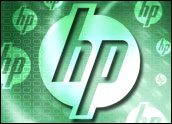
HP on Thursday shook the mobile devices world in announcing that it’s killing off its webOS-powered smartphones and TouchPad tablet line.
The TouchPad reportedly suffered poor sales in its short few weeks on the market, and little hasbeen heard about HP’s Palm Pre family of smartphones.
HP said it’ll continue to explore options to optimize the value ofwebOS software going forward.
“They’re just trying to say they’re looking for somebody to buywebOS,” Carl Howe, director of anywhere consumer research at the YankeeGroup, told TechNewsWorld.
Will HP succeed? After all, webOS has been limping along for years,first at Palm, where it was developed, and then at HP, which got theOS when it purchased Palm in 2010.
HP did not respond to requests for comment by press time.
HP’s Global Plans for webOS
HP bought Palm back in April 2010 to get into the mobile market.
The acquisition would be a transformational deal in theconnected mobility market, said Todd Bradley, executive vice president of HP’s personal systems group. HP would invest heavily in product development.
That connected market extends from mobile devices to netbooks andlaptops, and it incorporates the cloud. It’s the same connected marketApple is tackling with iOS andiCloud.
HP showed few outward signs in recent months that it was losing faith in the plan that led it to buy Palm. HP CEO and President Leo Apotheker reiterated the vision of aseamless, secure, context-aware, connected world in his keynotespeech at an HP strategysummit in March, and again at the AllThingsD conference in June.
What happened? What led HP to scuttle its vision after splurging $1.2billion on Palm? Can it recoup its costs?
Suffering From the Mobile Market Squeeze
Perhaps HP was too late after Apple had alreadyestablished a powerful lead with the iPhone. Maybe HP was also heartened by the progress of Android, which made significant gains within a year of its launch and is now nipping hard atApple’s heels.
Android took 20percent of the media tablet market from iPad in the last year, ABIResearch found.
However, unlike Android, which is licensed to anyone who wants to useit to power their mobile devices, webOS is, like Apple’s iOS, a closedsystem.
When your business model is similar to the market leader’s, you’dbetter hope for two things: That the market leader is somnolent enoughto let you catch up to it, and that your marketing and distributionskills are better.
However, Apple has constantly innovated in the product field, and itsmarketing and distribution are widely recognized as second to none.
webOS Device Woes
The news of HP’s webOS device shutdown came the day after its latest webOS phone, the Palm 3, went on sale in Europe.
Meanwhile, sales of the TouchPad have been so bad that U.S. retailer Best Buy, atleast, is reportedly pressuring HP to take back its piles of excess inventory. HP was forced toslash TouchPad prices three times recently after having put thedevice on retailers’ shelves only last July.
HP needed the time to mature webOS and its devices, Richard Shim, asenior analyst at DisplaySearch, told TechNewsWorld. Further, HP hadto learn a whole new set of skills — create a healthy app developercommunity, help devs create good apps, sell the product anddifferentiate it from others.
But the fast-moving mobile device market is unforgiving, and HPcouldn’t get the time it needed to catch up.
HP’s having a strong presence in the corporate market didn’t helpbecause it lacked apps.
“If you can’t tell the CIO, the CEO, the VP of IT that your producthas the apps they need for their tablet, you won’t get any traction,”Laura DiDio, principal at ITIC, told TechNewsWorld.
Possible Alternatives for webOS
There are other areas where webOS might fit, such as embedded systems, suchas those in smart appliances, or intelematics –telecommunication devices in automobiles such as GPS and automotivenavigation systems.
That’s the area HP’s Bradley and Apotheker are possibly eying.
However, it’s not clear whether HP can penetrate those markets.
“[Succeeding in the embedded systems market] would be a stretch,although HP’s history in industrial measurement equipment may offerthem some ins there,” said Charles King, principal analyst at Pund-IT.
“The embedded OS space is extremely crowded,” King told TechNewsWorld.”But the biggest challenge for HP there would be to convincedevelopers that webOS has a chance. That seems like a tall order.”
A Two-Time Loser?
If HP puts webOS up for sale, will it get any takers? That depends on whom you talk to.
u201cWebOS has had a couple of owners now, and I’m not optimistic,” theYankee Group’s Howe pointed out. “It may be the operating systemnobody wants.”
That may be too gloomy a view to take, especially in light of Google’srecent purchase of Motorola.
“There are a lot of people willing to buy webOS so they can stay inthe mobile business in the wake of Google’s purchase of Motorola,” RobEnderle, principal analyst at the Enderle Group, told TechNewsWorld.
That purchase is driving the mobile device market toward a verticallyintegrated model, Enderle said.
“There will be three players left. Apple and Google-Motorola are thefirst two, and whoever wants to be the third one may be looking atwebOS,” Enderle speculated.
“HTC is probably the hungriest, but there’s also Samsung and LG,”Enderle stated. “They all have the money and resources to buy webOS.”





















































